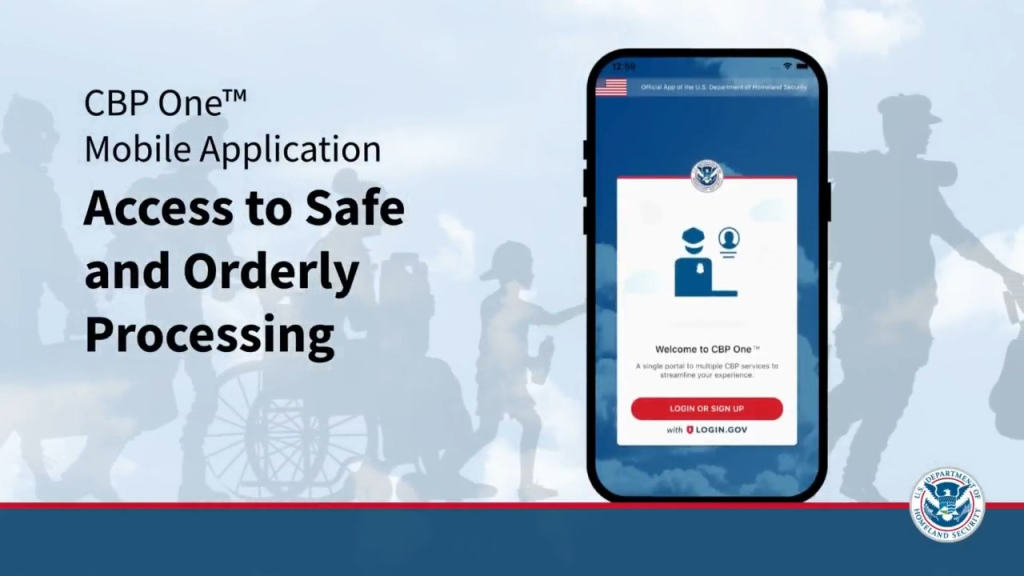The future of the CBP One program, a lifeline for migrants hoping to enter the U.S. legally, is in jeopardy. This app has allowed nearly one million people to enter on two-year work permits. However, its future is uncertain, with an incoming administration promising to end it. The CBP One app could be discontinued, leaving many worried about what comes next.
A lifeline for migrants
The story of Karla Figueredo, a Cuban nurse who recently escaped Cuba’s migration wave, highlights just how crucial the app is. Figueredo found herself in Tijuana, Mexico, while waiting for permission to cross into the U.S. She stayed with Martha Rosales, a long-time Tijuana resident, who had just suffered dog bite injuries and needed medical help. During her stay, Figueredo treated Rosales’ wounds and, in return, received permission to share Rosales’ contact info with others in need of shelter.
Rosales turns her home into a refuge
In no time, Rosales’ home turned into a haven for migrants. Rosales, confined to a wheelchair at the time, opened her doors to newcomers, providing shelter and warmth. She quickly became a central figure in a network of at least thirty-six shelters for migrants using the CBP One app.

Rosales, 45, who had worked as a janitor, left her job to focus on helping migrants. She became a motherly figure to those staying at her home, many of them from Cuba. The migrants affectionately call her “Tía Martha.” She prepares meals, celebrates birthdays, and drives them to their CBP One interviews.
Advocates praise the CBP One app
The CBP One program is credited with reducing chaos at the U.S.-Mexico border, helping cut down unauthorized crossings. Advocates argue that it has improved the asylum process. Yet, critics claim the system favors those with a lottery-like chance for legal entry, leaving behind those who’ve contributed taxes while waiting for visas.
For migrants like Dayron Garcia, a Cuban doctor, the CBP One app was a salvation. He came to Rosales’ home with his wife and kids, seeking refuge and hoping to settle in Houston. “It’s a guarantee,” Garcia said. “You enter with papers, with parole.”
The CBP One Program’s popularity soars
First introduced during the Trump administration and adjusted under Biden, the CBP One app was initially aimed at customs brokers before expanding to help migrants navigate a complicated asylum process. It has become particularly popular among Cubans, Venezuelans, Haitians, and Mexicans.
For Cuban migrants, the app is a game-changer. Statistics show a dramatic decline in illegal crossings by Cubans, dropping from almost 35,000 in April 2022 to just 97 by September of that year. Despite its success, the app’s daily appointments are limited. With over 280,000 applicants for just 1,450 slots each day, many migrants turn to shelters like Rosales’ for help securing an appointment.
A safe haven in Tijuana
Rosales runs her shelter in a run-down neighborhood, where migrants wait for their chance to cross. During the day, they watch TV, play games, or search for appointment slots on their phones. Migrants still without appointments tirelessly work on their phones, trying to book their spot.
Starting at midnight, Rosales drives the migrants to their appointments, often in an SUV bought with her retirement funds. She shuttles them to the border for their early-morning slots before continuing her job at a local TV station. There, she works for four hours cleaning and fetching coffee for staff, who update her on immigration news.
A woman of few resources, yet big heart
Rosales also receives messages from migrants asking for shelter. She tracks their information, including party size and appointment dates. Despite her lack of formal education—Rosales completed just third grade—she is an effective communicator, often using voice notes to respond to migrant inquiries.
With the help of Enrique Lucero, former director of migrant affairs in Tijuana, Rosales legally established her shelter. She also received support in emergencies, like when she helped a woman who missed her appointment due to childbirth.
Surge in Cuban migration
The Cuban migration crisis has caused a surge in border arrests. After anti-government protests in 2021, many Cubans used Nicaragua as a gateway to bypass the dangerous journey through the Darien Gap. By spring 2022, Cubans were the second-largest group crossing illegally into the U.S., only behind Mexicans.
For many migrants, the CBP One program was a godsend. “CBP One came like a gift from God,” said Yoandis Delgado, a Cuban migrant who stayed with Rosales. He appreciated the sense of safety and support he found in Rosales’ neighborhood, which was much more secure than other accommodations.
Concerns over CBP One’s future
Yet, concerns over the future of the CBP One program are mounting. Migrants fear its cancellation, especially since their two-year permits will soon expire. Though the new administration hasn’t made clear statements on the program, critics argue it’s too lenient and could encourage more immigration.
For now, Figueredo, the nurse who once helped Rosales, keeps in touch. Figueredo, now a medical assistant in Houston, hopes to secure a green card through the Cuban Adjustment Act. She continues to support Rosales while balancing her busy work life.
The fate of the CBP One program is up in the air. But for now, shelters like Rosales’ continue to provide crucial support for migrants, offering a lifeline as they wait for a chance to legally enter the U.S.